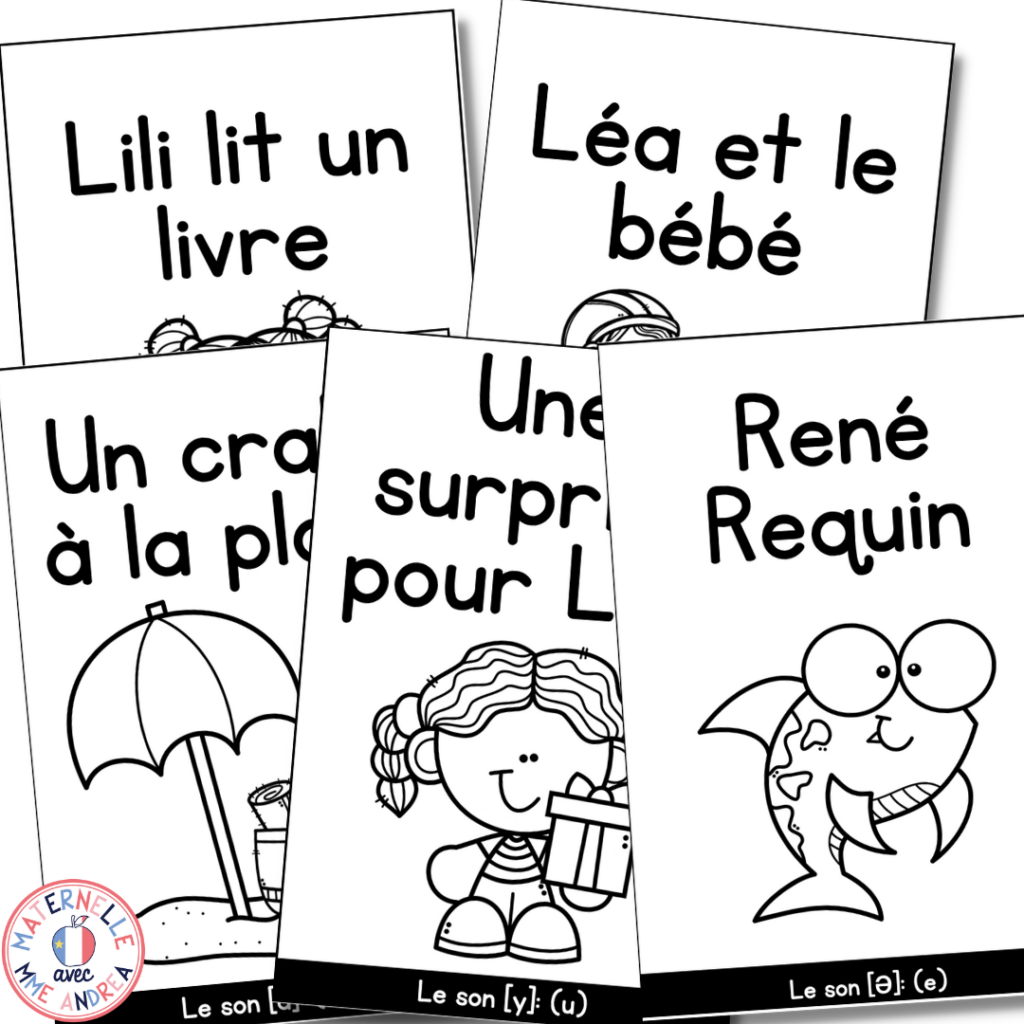Let’s talk about reading decoding and comprehension today.
Now that the Science of Reading is becoming more and more popular, and we are learning more about how our students’ brains work as they learn to read, we know that we need to better teach our French primary students to decode.
We want to make sure we are no longer encouraging our students to look at the picture and guess words.
But, so far, I have found two problems with this…
Problem number one? Not enough books! I have TONS of levelled readers at my school, but… no decodables at all.
Problem number two? Students who can decode anything you give them, but have no idea what they’ve actually just read.
In this blog post, I’ll explain a resource that I’ve made to help me with both of those problems.
Make sure you read all the way to the bottom, because you’ll be able to grab a free sample to see if it works for you, too!

Once I realized that my shift in reading instruction would mean that I wouldn’t be able to use my levelled readers in the same way anymore, I knew I would be faced with a no books problem.
As you likely know by now, when I see a problem, I like to solve it!
I immediately got to work creating a variety of decodable books. I’ve created a big bundle of blending books for vowels + sons composés. I’ve also made a collection of “Je peux lire” mini books for all of the French sounds.
I am really proud of all of them! But, I still needed to solve the comprehension piece.
The reading recovery teacher mentioned to me that often, our students are able to decode most words in their books. But, they have no idea what they just “read”. They can’t retell the story or answer deep questions about the text.
What’s the point in reading if you don’t know what you read?
Décode et dessine – French Decodable Readers for Comprehension
The most recent decodable books I’ve created help with this.
They are called “Décode et dessine” and have a big focus on both decoding and comprehension.
Each story has a beginning, middle, and ending. Each page has 1-2 simple sentences.
All of the sounds that students will need to know in order to read each book are listed at the beginning. I do suggest these books for students who already know most/all letter sounds and some sons composés, depending on the book.
Note: There are NO pictures in the book – just on the cover page.
As students read, they will NOT be able to rely on any images to help them guess. They will need to actually read each word.
Then, you can check for comprehension by asking simple questions about what happened on each page.
To show that they understand, students will illustrate each page themselves!
How to use these decoding and comprehension books
- Choose your sound – I have created books for 15 different sounds. Some of them require more phonics knowledge than others. Take a peek and choose the one you need!
- Prep your books – These books are simple to prep. Just print, slice down the middle, and staple. Each slide down the middle + staple makes two books.
- Have your students decode to read the story. Make sure they know the sounds featured in each book before they begin reading!
- Check for comprehension as your students read. Use simple questions! For example, if your student reads “Lili va au tapis”, ask: “Où va Lili?”.
- Have students illustrate each page. After they show you they understand what they read by answering your questions, have them draw what’s happening on the page.
- Have your students reread the book. Each time they read it, they should get more and more fluent and fluid. Practice makes progress!
That’s it – that’s how they work. A simple, effective routine to add to your teacher toolbox that will get your students decoding AND understanding what they read!
And if you want to give it a try, great news! I’ve got a freebie of this decoding and comprehension resource right here for you.
Your students will love learning the sound /i/ with Lili via this book. To grab your copy, just CLICK HERE, enter your name & email, and I’ll send it to your inbox!




